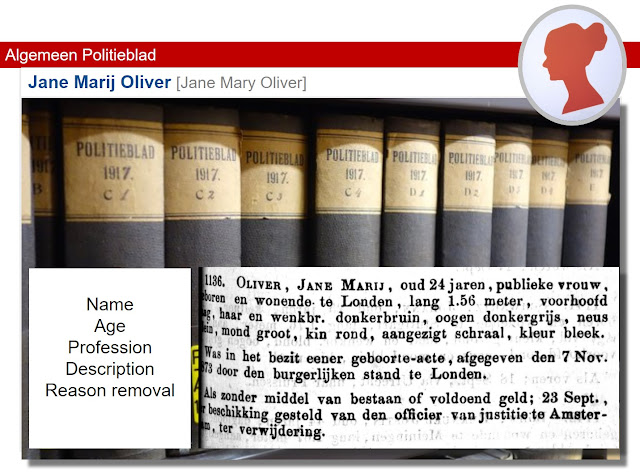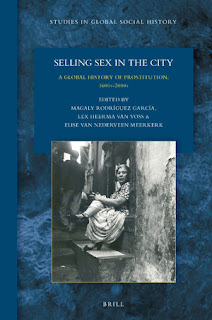Undesirable foreign prostitutes in Amsterdam, 1874-1897
If you were a foreigner arriving in late nineteenth-century Amsterdam, intending to live there for a period of time, then you were by Dutch law (Vreemdelingenwet) required to apply for a travel and residence pass at the police station. With this official document, you could reside in the city for three months, after which you could extend it three times. If your occupation was, however, related to prostitution the request would be denied by default. Although prostitution was a legal profession in the Netherlands, a Dutch municipality had to make its own regulations on the topic. Attempts in Amsterdam were made, but each proposal of regulating prostitution was rejected by the council, claiming this would only increase illegal prostitution in the city.(1)
What information can be found within these foreign registers?
- Number and registration date.
- Name of applicant.
- Profession, place of birth and address of residence.
- Passport or other legal documents of identification.
- Appearance.
- Living arrangements in Amsterdam.
- Renewal application [kept blank].
- Other comments.
Jane Mary Oliver ("Nelly")
One of the foreign women working as a prostitute in the Netherlands was Jane Mary Oliver or "Nelly" as she was called. Travelling from Brussels, the London born, 23-year-old Jane applied in 1874 for a travel and residence pass in Amsterdam. Although the application was rejected, she stayed in the city for about a month and then left for Rotterdam. Her name appears, however, again in the same register three months later. In 1875 she returns to Amsterdam and stays another two months after which she leaves for the garrison town of Den Helder. She returns again in July but now is caught and led out of the country by the police. So although she did not receive a travel and residence pass, she was able to stay a considerable time in the Netherlands.
The register of rejected travel and residence passes, in combination with the data from the Politieblad, are interesting sources to combine when doing research into foreign prostitutes in the Dutch capital city.
Notes
(1) J.B. Slobbe, Bijdrage tot de geschiedenis en de bestrijding der prostitutie te Amsterdam (Amsterdam 1937) 65.
(2) L. Pöckling en M. Schrover, 'Registers van verstrekte en geweigerde reis- en verblijfpassen (1849-1923)' in: M. Schrover, ed., Broncommentaren dl. 5 (Den Haag 2002) 60.
(3) More information on the Politieblad can be found in: C. van Eijl, 'Registratie van vreemdelingen in het Algemeen Politieblad (1852-1947)' in: M. Schrover, ed., Broncommentaren dl. 5 (Den Haag 2002) 71-91.
* Images in this blog post: Foreign register rejection images, taken from the online scans of the Amsterdam City Archive; Jane Mary Oliver images are taken from my presentation slides of the Secret Lives Conference (Hinkley 2018) on '19th Century British prostitutes in the low countries.






Comments
Post a Comment